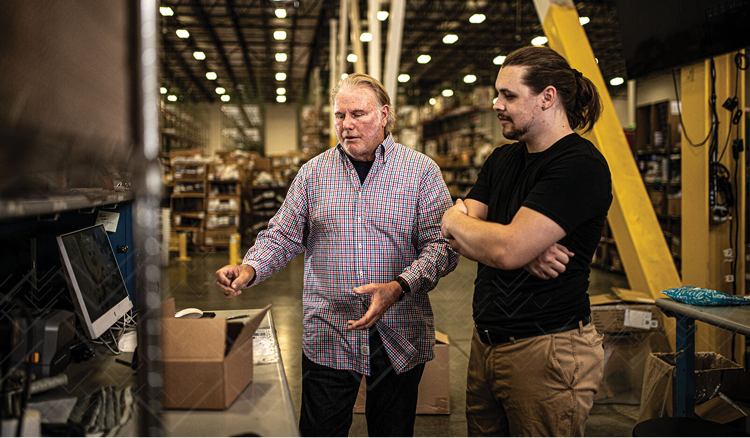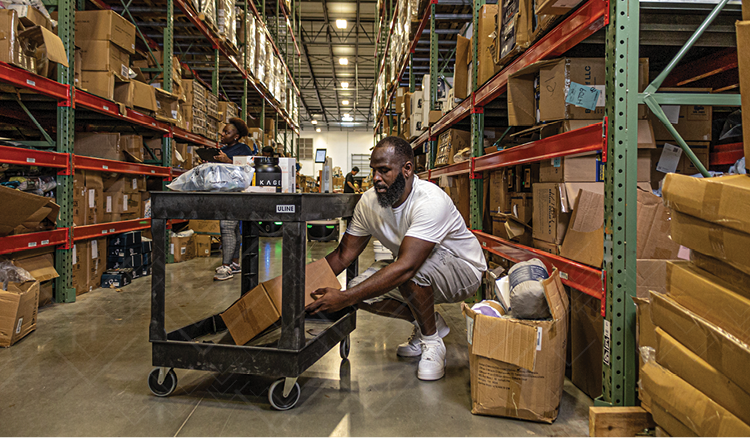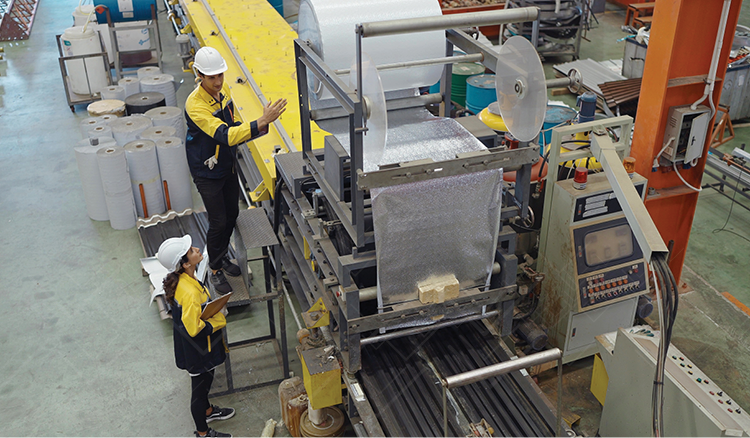Your Labor Strategy Is Broken. Here's How to Fix It Without Breaking Your Team
Most companies treat labor like a fixed asset—budgeted in advance, scaled reluctantly, and stretched thin. But in the real world of logistics and manufacturing, the work itself is anything but fixed. It bends and buckles with customer demand, supplier variability, weather delays, promotions, product launches, and everything in between.
And yet the prevailing labor model hasn’t changed. It’s still full-time or temp-to-hire. Still rigid. Still slow. Still costly.
Meanwhile, frontline turnover remains staggeringly high. The average entry-level worker in these roles lasts less than 90 days. HR departments are on a treadmill of recruitment and replacement. Supervisors burn hours onboarding instead of improving output. And operations leaders are left to fight volatility with a workforce that was never built to flex.
But turnover isn’t the disease—it’s the symptom. It’s a signal that we’ve misaligned our labor strategy with the nature of the work itself.
Fixed Labor for Fluid Work? It Doesn’t Add Up.
Every time a worker walks out two weeks into a role, it’s easy to blame the labor market. But in reality, what we’re seeing is the system rejecting a mismatch. The roles we’re hiring for are tied directly to demand variability - repacking, loading, kitting, restocking. These are the tasks that spike without warning and vanish just as fast.
You can’t fight volatility with rigidity. And yet, that’s exactly what most labor strategies attempt to do.
We hire for peak. We onboard for consistency. Then we act surprised when those assumptions fall apart on the floor. Variable work is assigned to fixed roles, and the workforce absorbs the tension. Schedules misalign. OT soars. Idle time creeps in. Workers churn.
If the structure doesn’t match the shape of the work, no amount of cultural programs or referral bonuses will fix it. Flexibility isn’t a perk. It’s the requirement for stability in a volatile environment.
What Turnover Is Actually Telling You
Senior leaders obsess over customer churn. They track it like a heartbeat. But labor churn? That gets handed off to HR and explained away with cliches about Gen XYZ not wanting to work.
High turnover at the entry level isn’t a character flaw in the workforce—it’s a signal that the job, as designed, doesn’t fit the reality of the operation.
We say it's a "steady job," but the pace isn't steady. We say there's room for growth, but offer little clarity on when or how. We design static roles to support dynamic workflows, and then blame the individual when they leave.
Turnover, in this light, is operational feedback. It tells us where expectations are misaligned, where the labor model fails to absorb demand shifts, and where job design hasn’t caught up to reality.
And when you reframe churn as data instead of drama, you can finally act on it. You stop trying to solve a people problem and start solving a system problem.
Introducing Labor Fluidity: The KPI You're Not Tracking
Labor utilization has been on executive dashboards for decades. But in a world where demand fluctuates hourly, utilization is no longer the leading indicator. Fluidity is.
Labor Fluidity Rate = % of variable work covered by on-demand capacity aligned to real-time demand.
This metric tells you how well your labor model flexes with the work. A highly fluid workforce means:
- Less idle time during lulls.
- Less burnout during peaks.
- Fewer bad hires.
- Faster cycle times.
- Higher OTIF scores.
And it reveals which parts of your operation should remain fixed versus which should float. It gives your supervisors real tools to solve real problems—not just fill shifts.
If your labor model assumes that every job must be full-time, permanent, and pre-scheduled, you’re carrying overhead and risk that may no longer be necessary. Labor fluidity gives you the lever to control capacity without bloating headcount.
Stop Building for Peak. Start Building for Alignment.
The old playbook was simple: staff up for the worst-case scenario and hope the numbers balance out. The result? Bloated costs, unnecessary overtime, and a floor that lurches from underloaded to overworked.
That’s not strategy. That’s panic management on a delay.
The new playbook builds for alignment, not peak. It segments labor into two clear groups:
- Core: Full-time roles that thrive on continuity and require tribal knowledge.
- On-Demand: Operators who absorb volatility, cover absences, and flex with daily volume.
This isn’t just a staffing adjustment. It’s a shift in operational architecture. It puts labor where it belongs: as a responsive, real-time function that serves demand—not one that fights it.
And when executed well, this approach doesn’t just reduce cost. It improves output, increases accountability, and turns your labor model into a true competitive advantage.
Labor Isn’t the Cost Center You Think It Is
Too many executive teams still see labor as a problem to reduce, rather than a tool to deploy.
The result? They overhire, overspend, and still underperform. Why? Because they’ve confused predictability with productivity. But the best-run operations in the world don’t aim for predictability. They aim for responsiveness.
When labor is aligned with the work—by skill, by time, and by demand—your entire operation lifts:
- Throughput increases
- Quality stabilizes
- Training costs shrink
- Burnout drops
- Supervisors shift from firefighting to leading
This isn’t theory. It’s what happens when labor is managed like any other high-value resource: with intent, with precision, and with flexibility.
Final Thoughts: Don’t Fix the Symptoms—Rebuild the System
If you're a site leader, director, or executive responsible for throughput, service levels, or labor strategy—here’s the challenge:
Don’t build for what your workforce used to be. Build for what your operation actually is.
Ask yourself: What percentage of your daily work is truly variable? How much of your team is being paid to wait? And how often do your best people leave because they’re stuck absorbing all the variability themselves?
The smartest teams today aren’t fighting churn. They’re designing around it. They’re building flexible labor models that treat volatility not as a threat, but as the baseline reality of doing business.
Turnover isn’t the enemy. Misalignment is.
And the sooner we stop treating labor like a fixed asset in a variable world, the sooner we unlock the agility our operations—and our people—actually need.
Case Studies That Prove It
- Vivid Impact increased fulfillment agility by scaling their workforce daily to meet 3x demand spikes without overtime.
- Intertech Products empowered their supervisors to flex labor across all shifts, improving coverage and reducing overhead.
- ADAC Automotive avoided $400K in automation costs and achieved $1.6M in total cost avoidance by deploying flexible labor during strike-related volatility.
- Community Impact Printing built a reliable labor bench for deadline-driven demand, improving consistency and reducing lead times.
Real businesses. Real outcomes. Real strategy in action.
If you're ready to fix your labor strategy without breaking your team, reach out to your local Veryable office today.
Previous Posts
How Policy Constraints, Not Just Production Bottlenecks, Threaten Your Bottom Line
The Future of Manufacturing and Logistics
Create a free business profile today to explore our platform.






